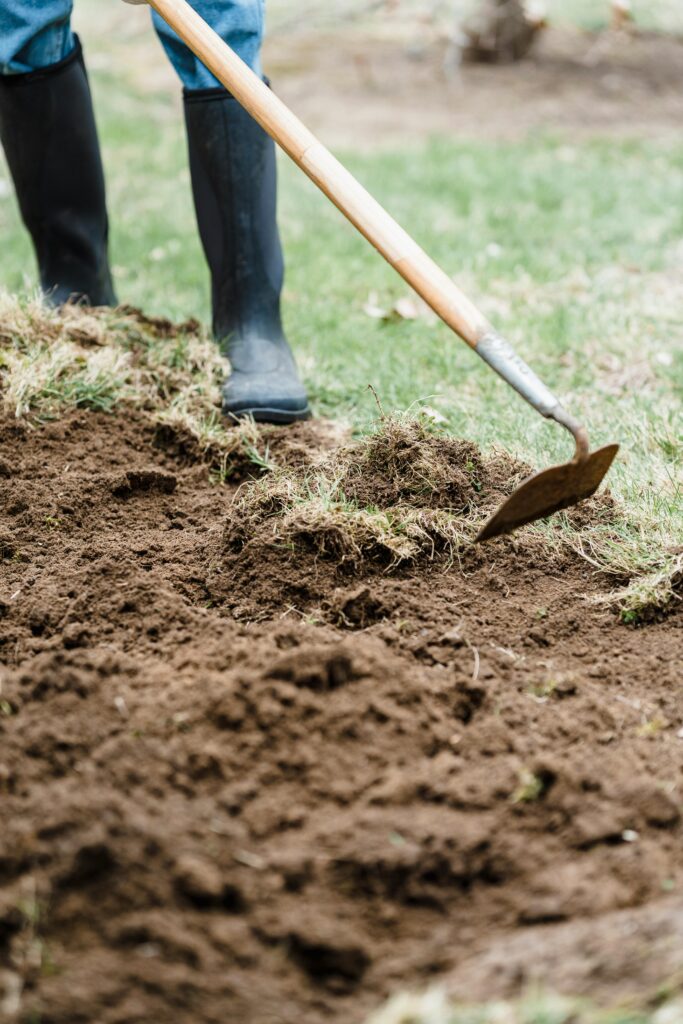Proper Soil Preparation Methods is the foundation of a successful garden. Whether you’re planning a vegetable plot, a flower bed, or a lush green lawn, getting your soil in top shape is crucial. Here are some tried-and-true methods to help you prepare your soil for planting and ensure your garden flourishes. 🌻🌾
Table of Contents
1. Starting – Soil Preparation Methods- Testing Your Soil 🧪
Before you start digging, it’s important to know what kind of soil you’re working with. Testing your soil will give you valuable information about its pH level and nutrient content. You can purchase a soil test kit from a garden center or send a sample to a local agricultural extension office. Knowing your soil’s characteristics will help you amend it appropriately.

2. Clearing the Area 🌿❌
Remove any existing weeds, rocks, and debris from the garden area. This will give your plants the best chance to grow without competition from weeds or obstruction from rocks. You can use a hoe, rake, or garden fork to make this task easier.

3. Adding Organic Matter 🍂
Organic matter improves soil structure, enhances nutrient content, and increases water retention. Compost, aged manure, leaf mold, and grass clippings are excellent sources of organic matter. Spread a layer of organic matter over your soil and mix it in thoroughly to a depth of 6-12 inches.
4. Loosening the Soil 🌿🔧
Loosening the soil allows plant roots to penetrate more easily and access water and nutrients. Use a garden fork or tiller to break up compacted soil. Avoid over-tilling, as this can damage soil structure and lead to erosion.
5. Adjusting Soil pH 🌡️
Most garden plants prefer a slightly acidic to neutral soil pH (6.0-7.0). If your soil test reveals that your soil is too acidic, add lime to raise the pH. If it’s too alkaline, add sulfur or peat moss to lower the pH. Follow the recommendations from your soil test results for the correct amount to apply.
6. Adding Nutrients 🌱✨
Based on your soil test results, you may need to add specific nutrients to your soil. Common soil amendments include:
- Nitrogen (N): Promotes leafy growth. Add blood meal, fish emulsion, or composted manure.
- Phosphorus (P): Supports root development and flowering. Add bone meal, rock phosphate, or fish bone meal.
- Potassium (K): Enhances overall plant health. Add wood ash, kelp meal, or greensand.
7. Mulching 🌾
Mulching helps retain soil moisture, suppress weeds, and improve soil temperature. After planting, apply a 2-3 inch layer of organic mulch, such as straw, wood chips, or shredded leaves, around your plants. Keep mulch away from the stems of plants to prevent rot.
8. Cover Crops 🌿🌾
Planting cover crops (green manure) like clover, vetch, or rye during the off-season can improve soil fertility and structure. Cover crops prevent erosion, add organic matter, and can be turned into the soil as a nutrient-rich amendment.

9. Crop Rotation 🔄
Rotate your crops each year to prevent soil depletion and reduce the risk of pests and diseases. Different plants have varying nutrient needs and pest susceptibilities, so rotating crops helps maintain soil health.
10. Regular Maintenance 🛠️
Maintain your soil’s health by regularly adding organic matter, monitoring pH levels, and avoiding over-tilling. Healthy soil is the key to a thriving garden, so make soil care a regular part of your gardening routine.
Recommendations:



By following these soil preparation methods, you’ll create a strong foundation for your plants, leading to a more productive and beautiful garden. Happy gardening! 🌷🌱
Feel free to share your soil preparation tips and experiences in the comments below. Let’s grow together! 🌿🌻
If you are looking for my content Look at our blog! – gardenportals.com/blog
